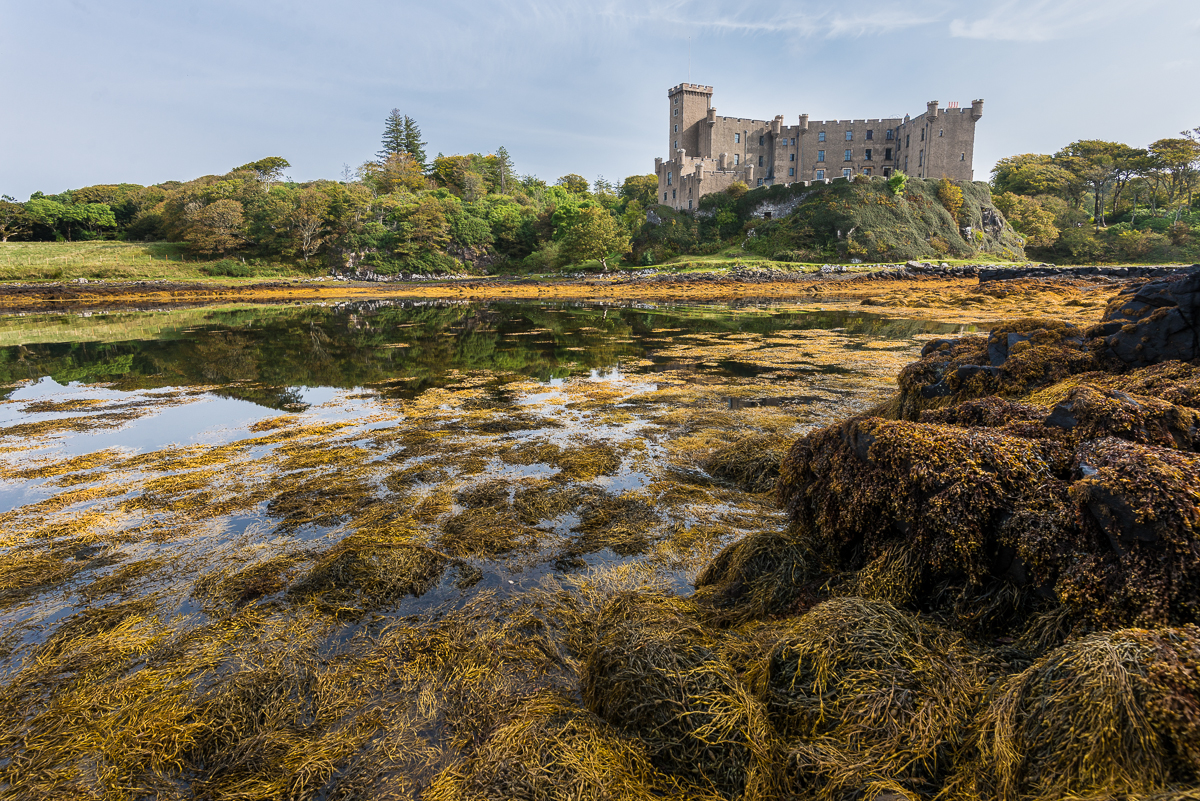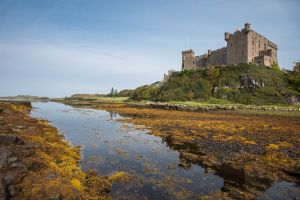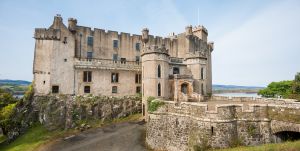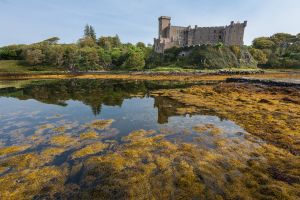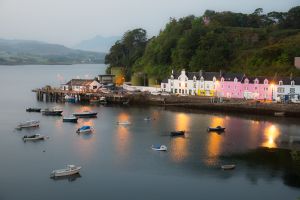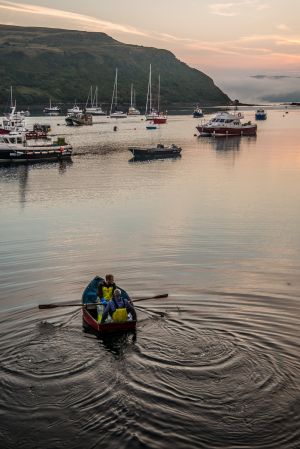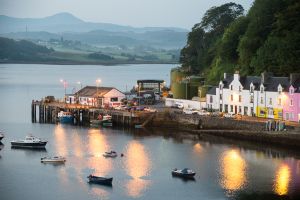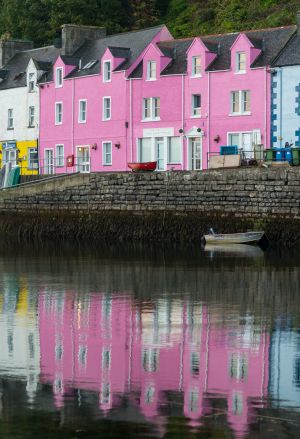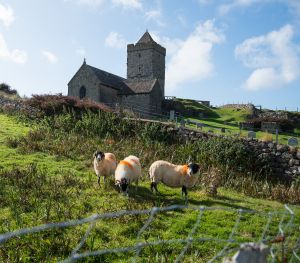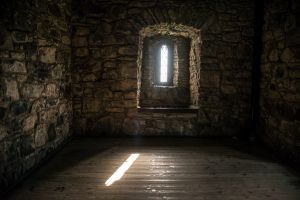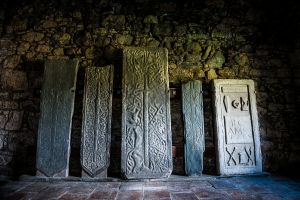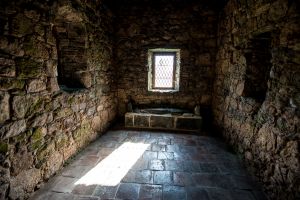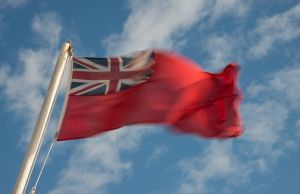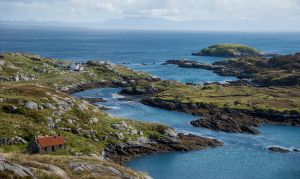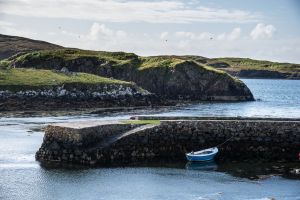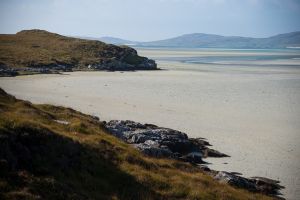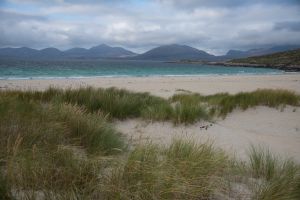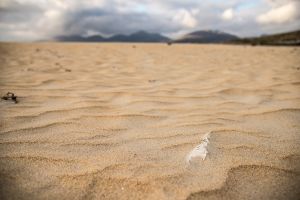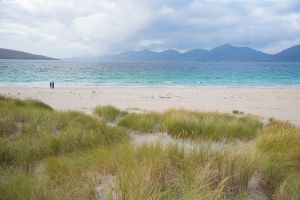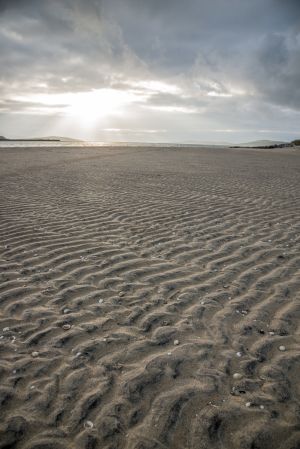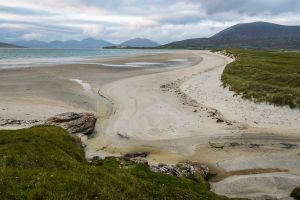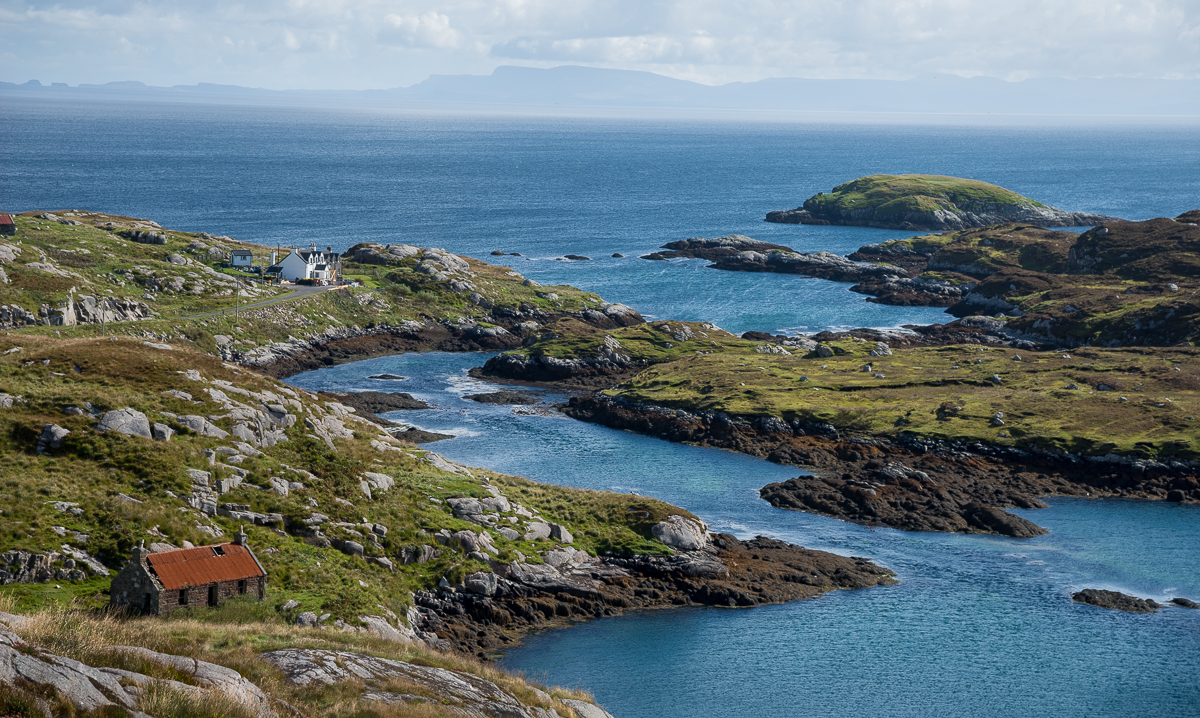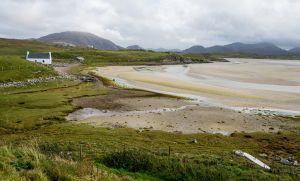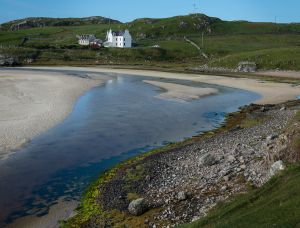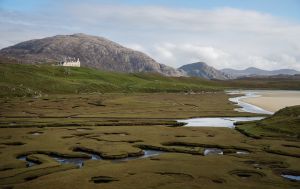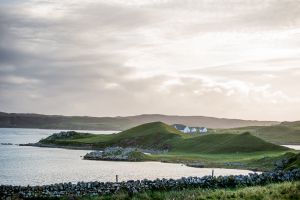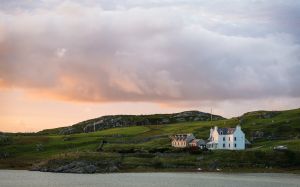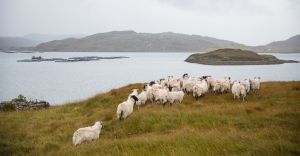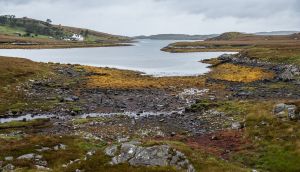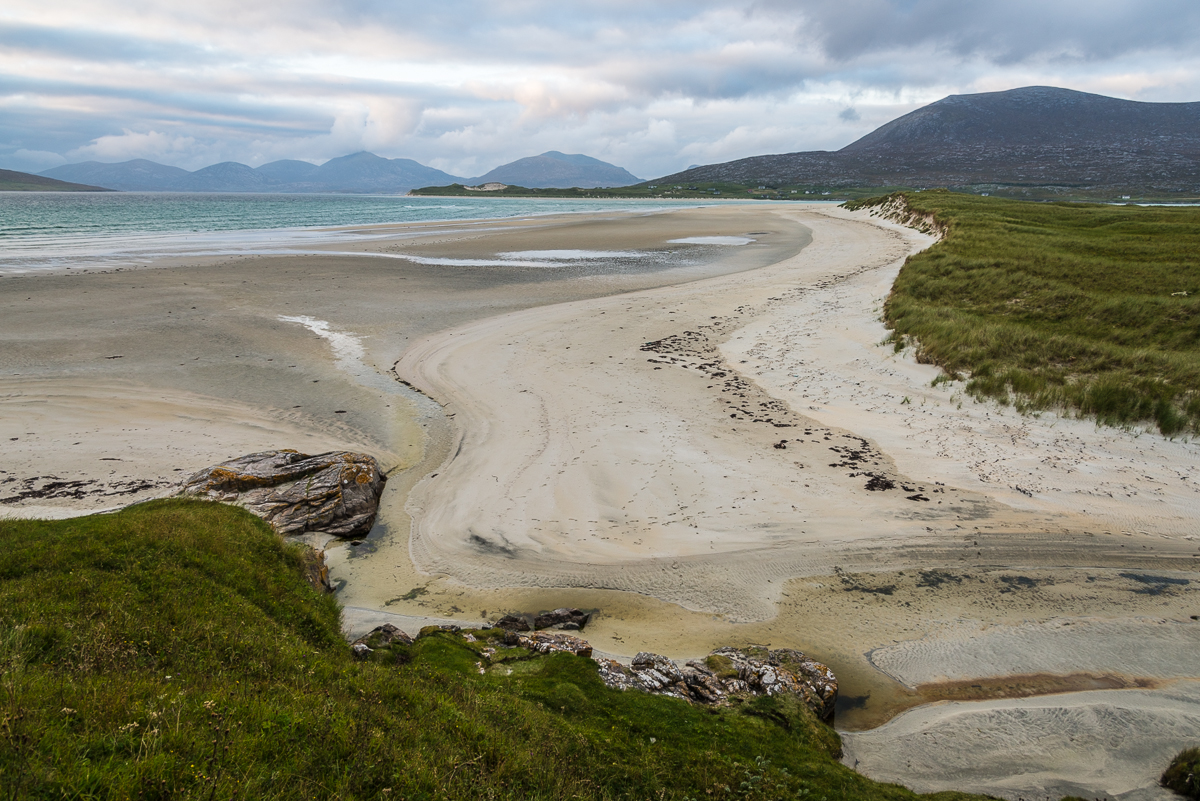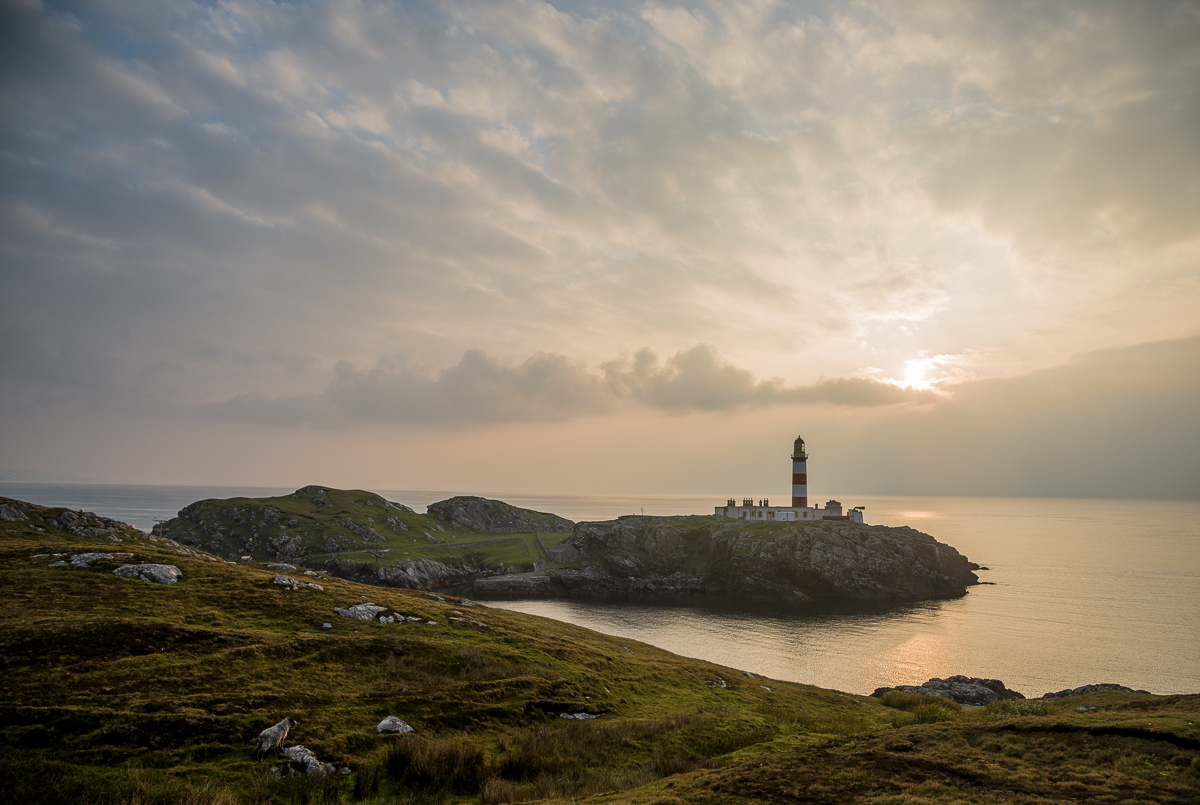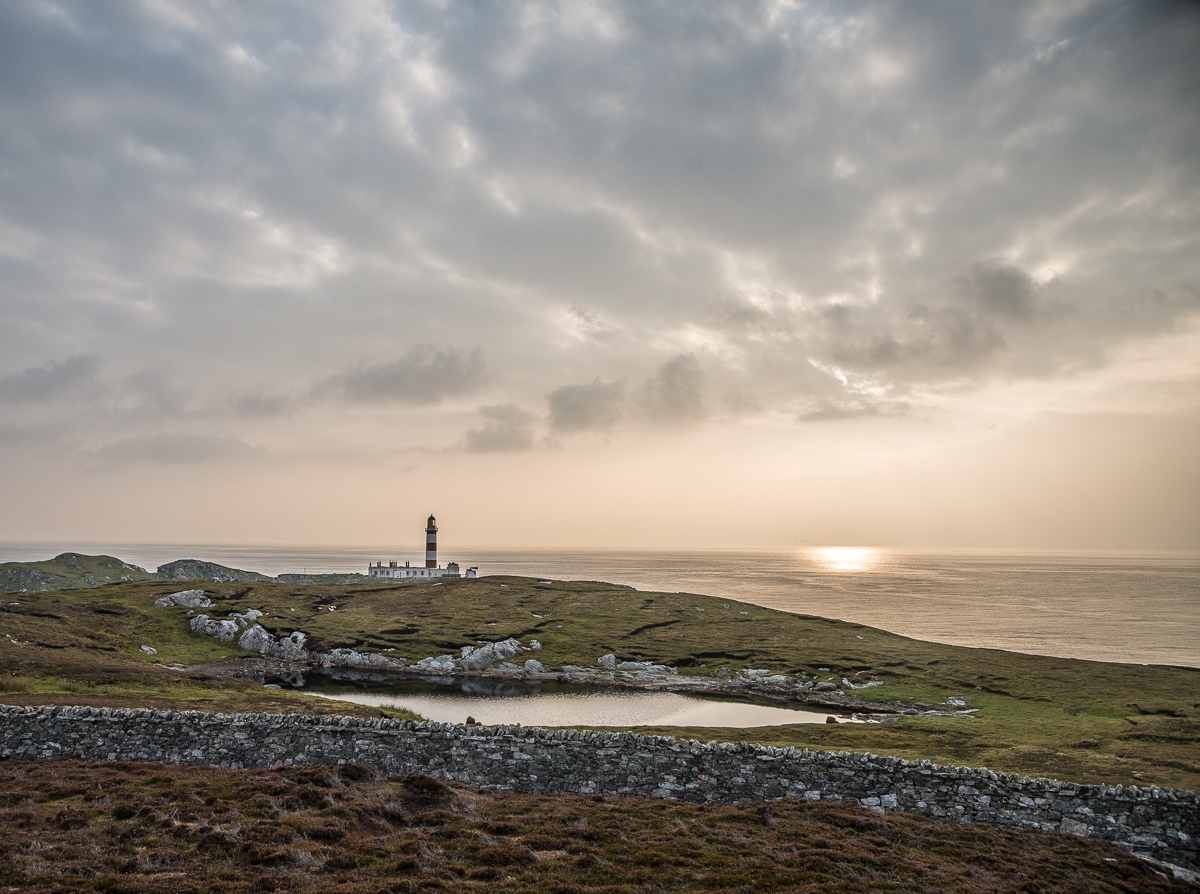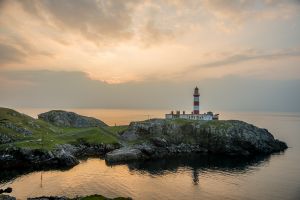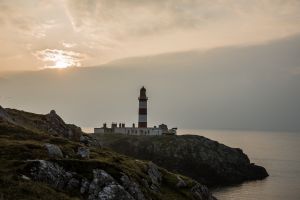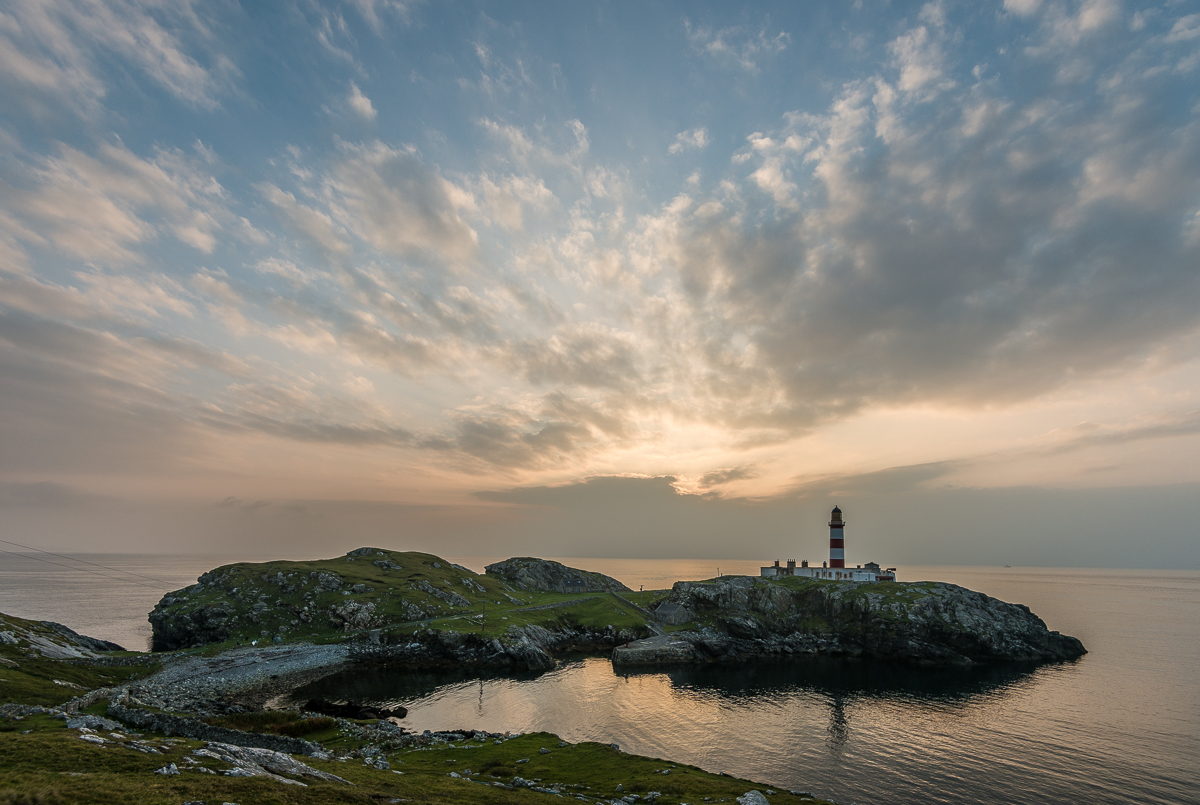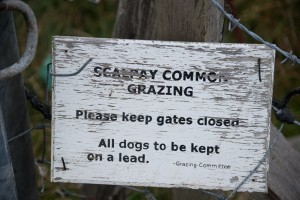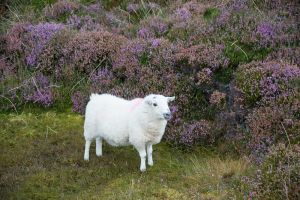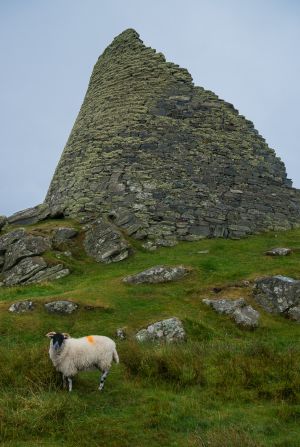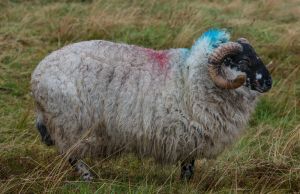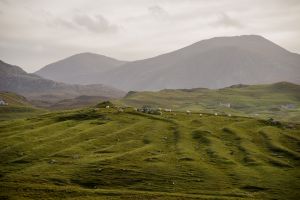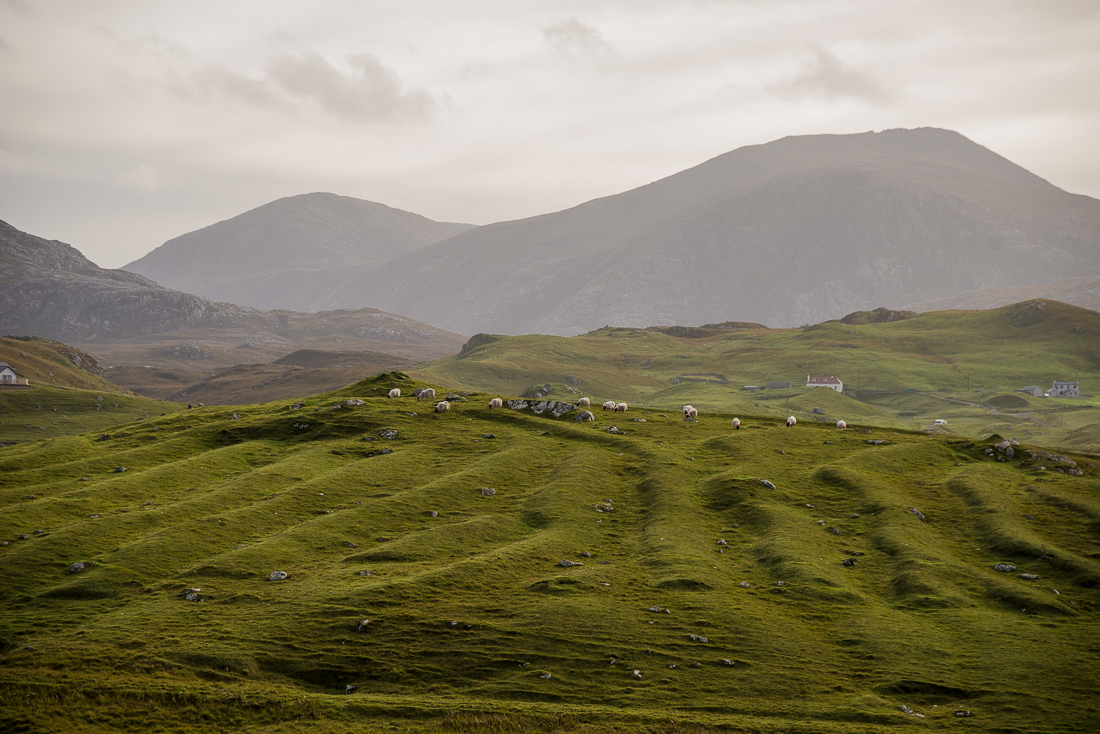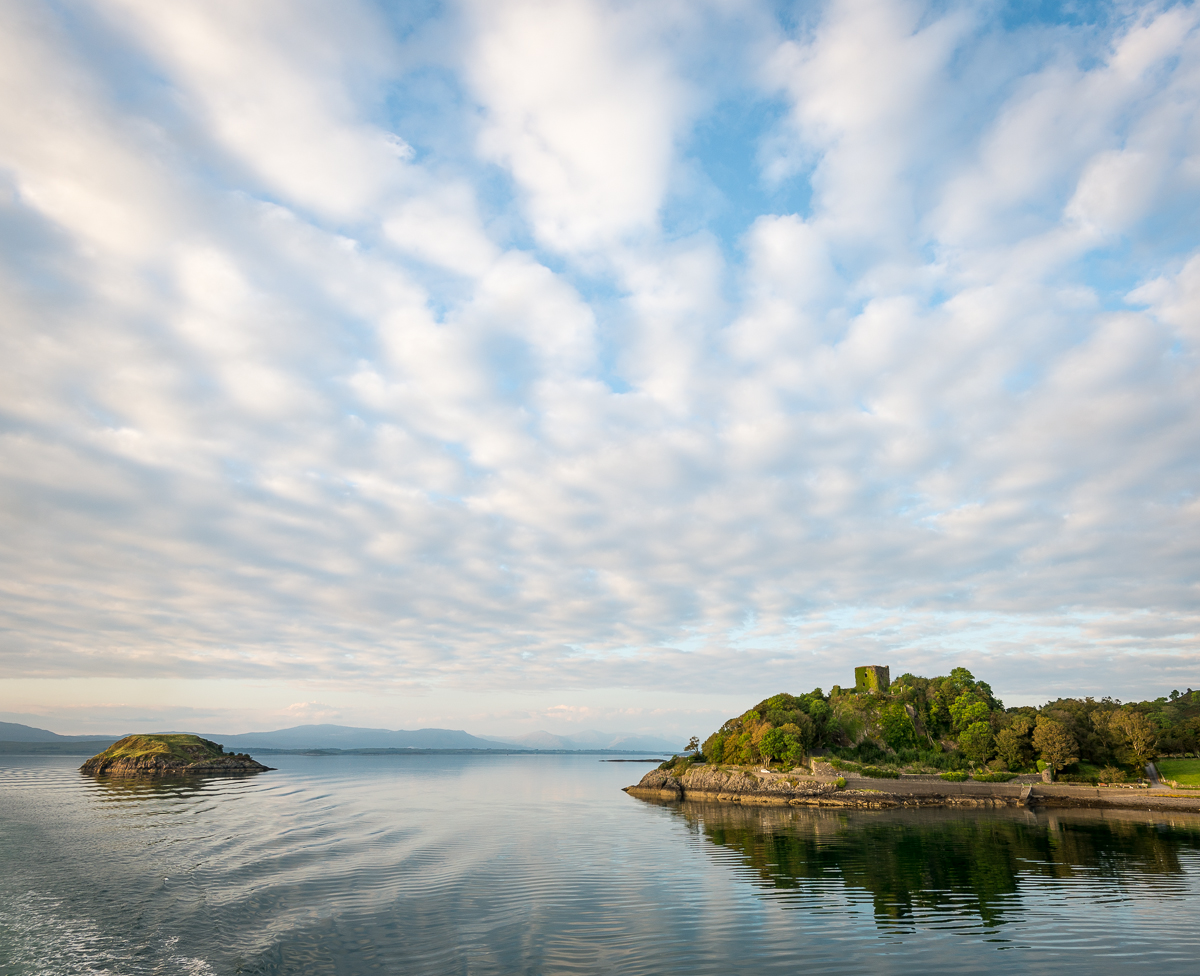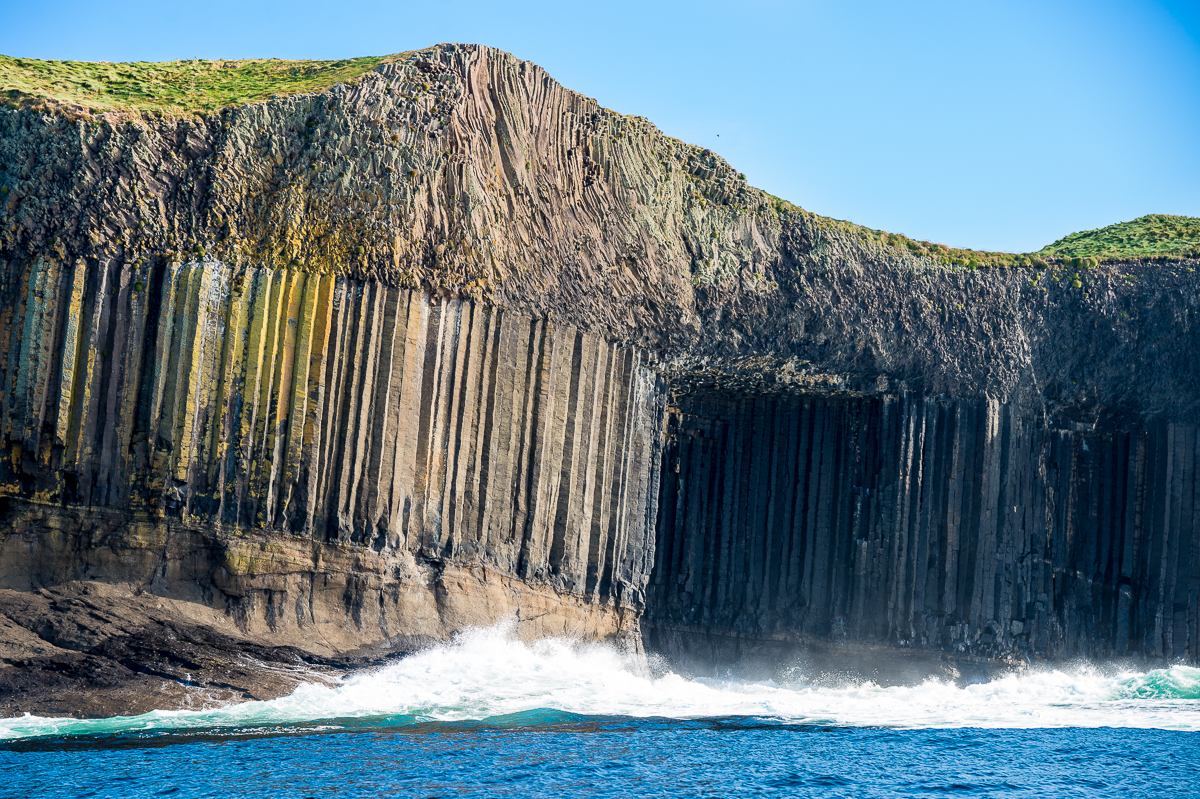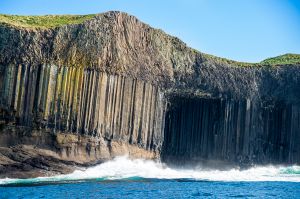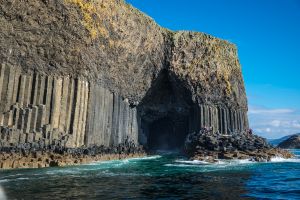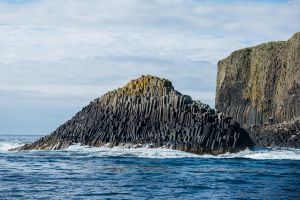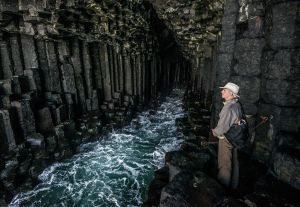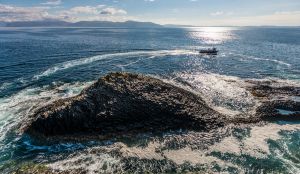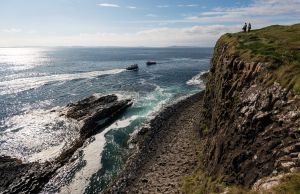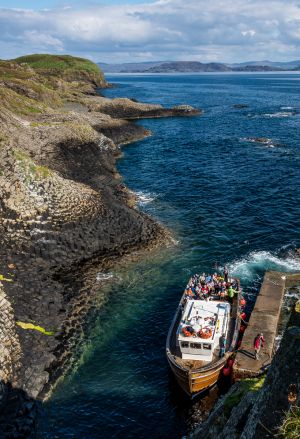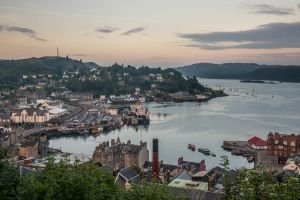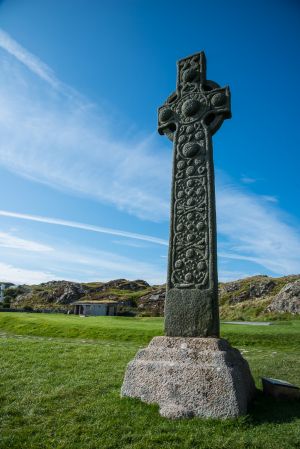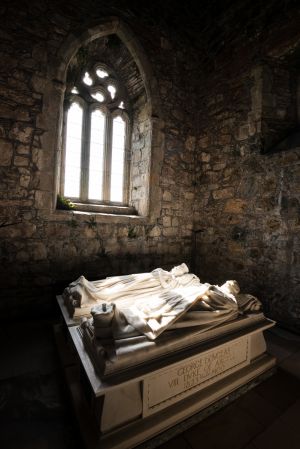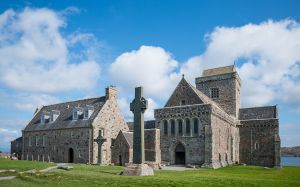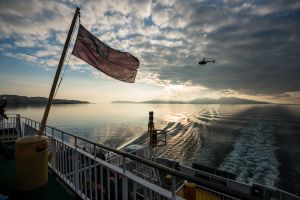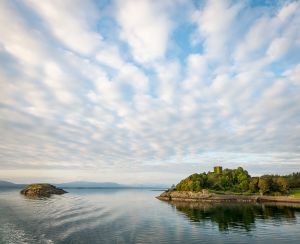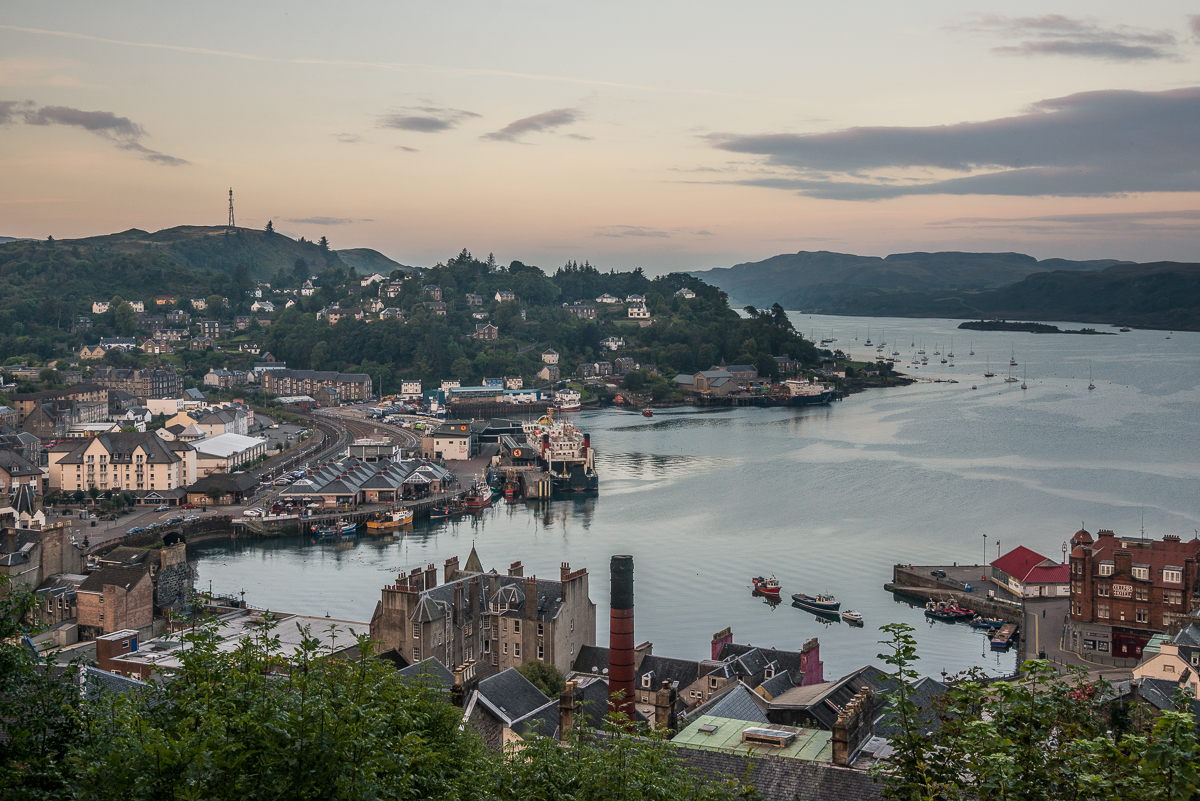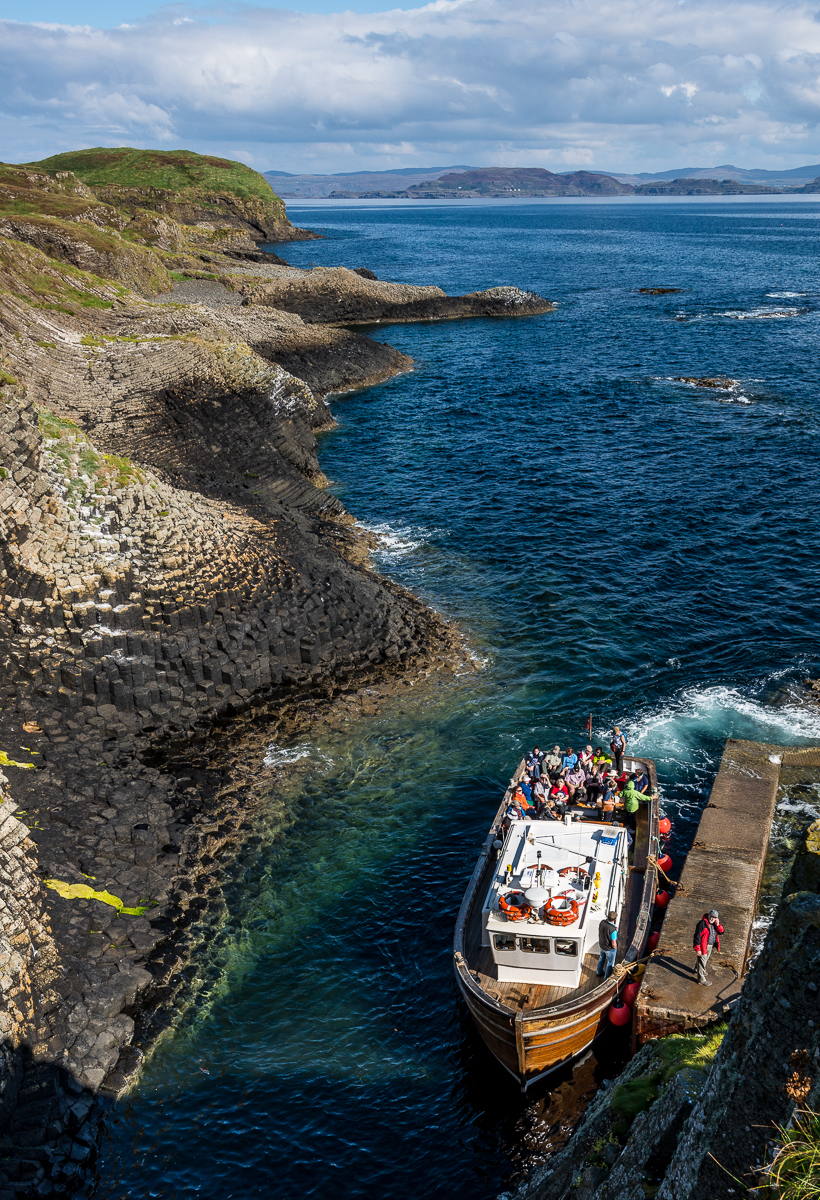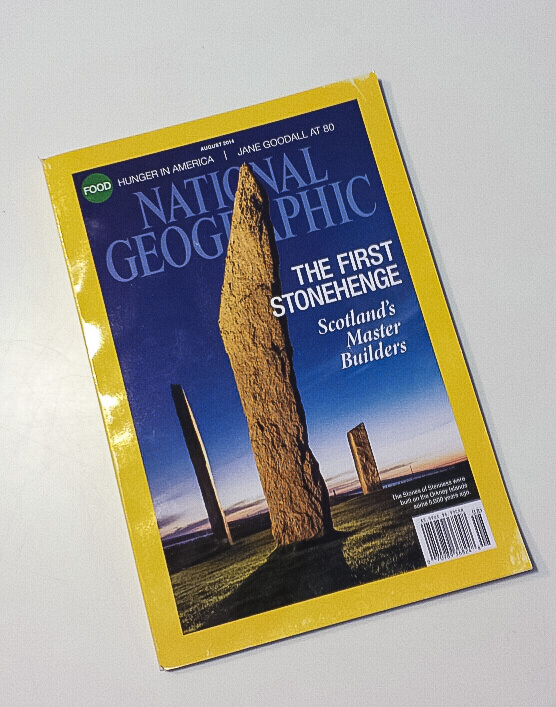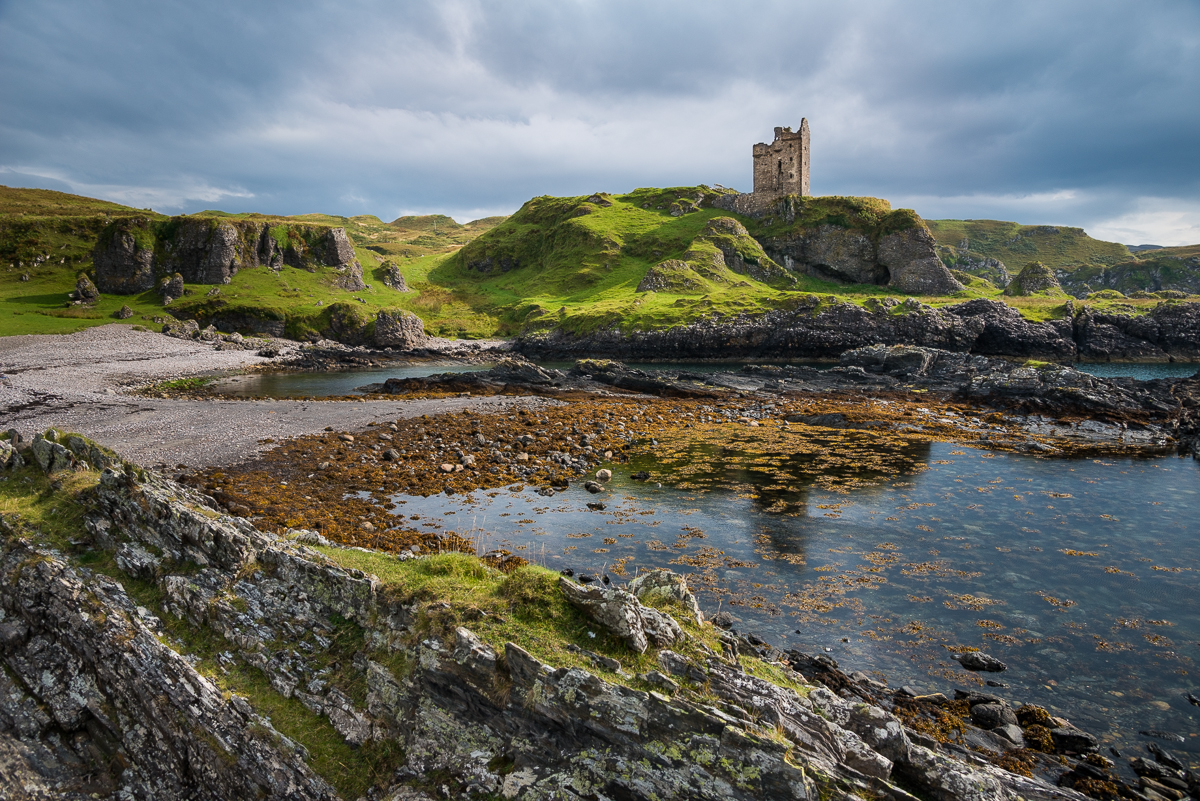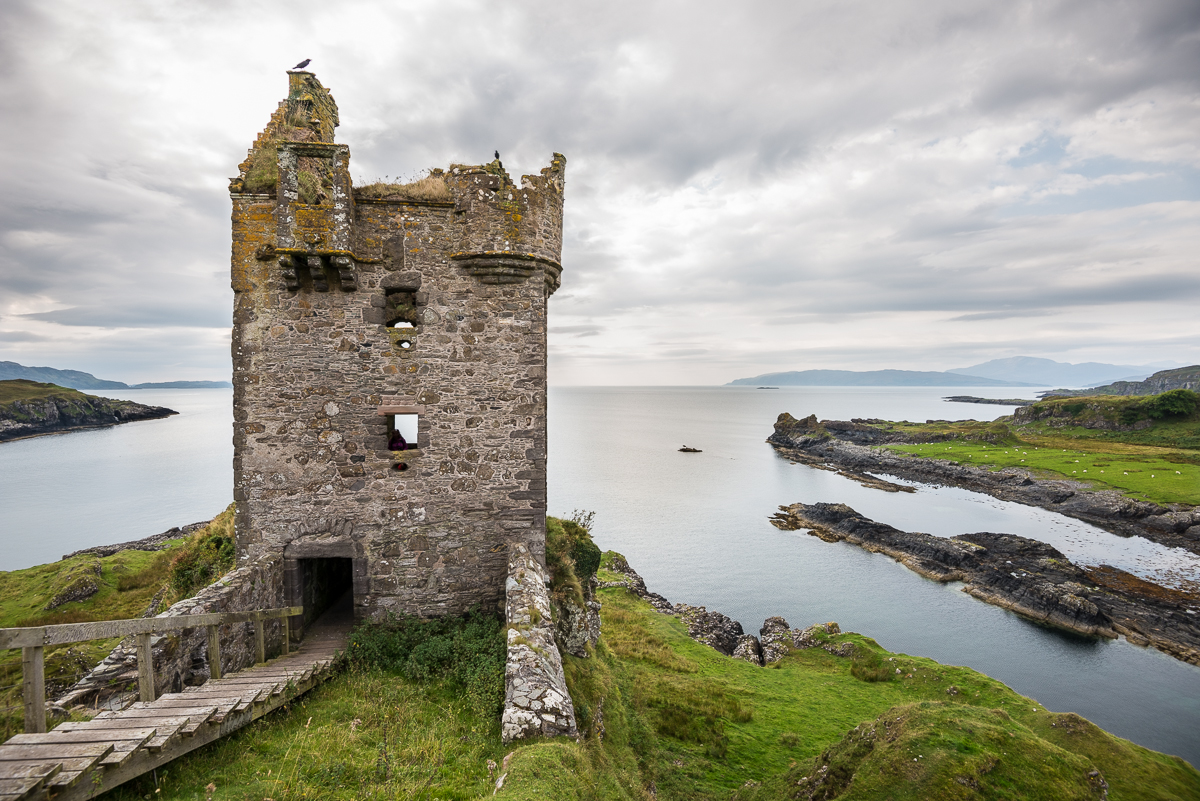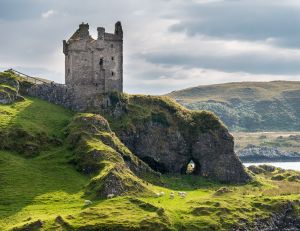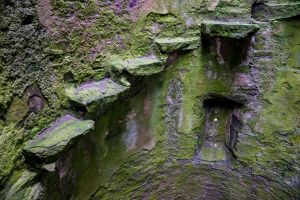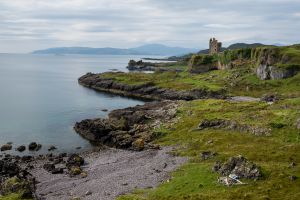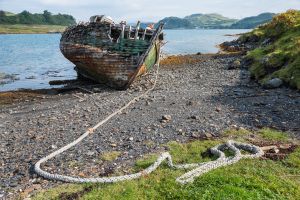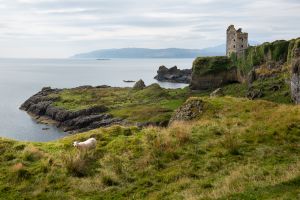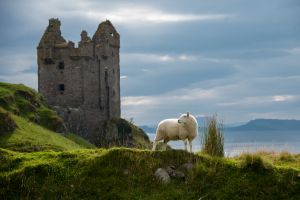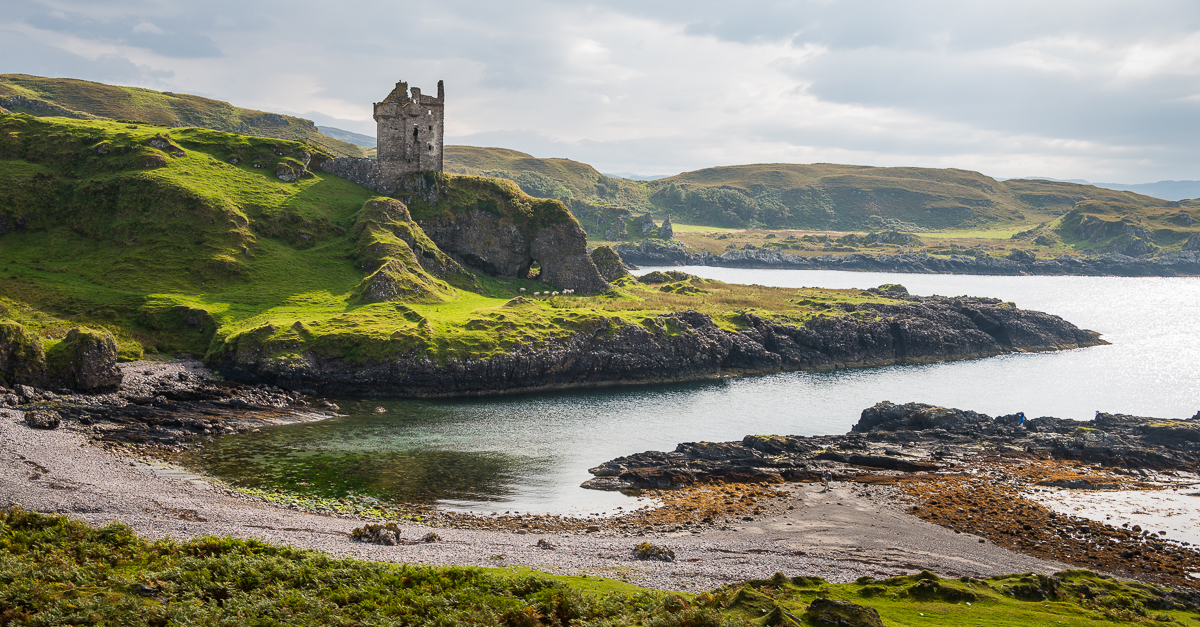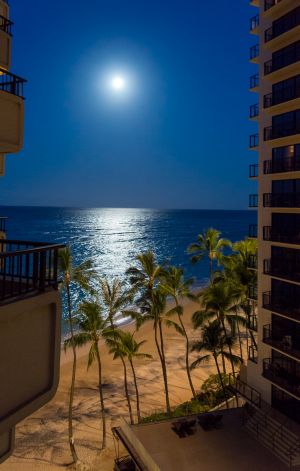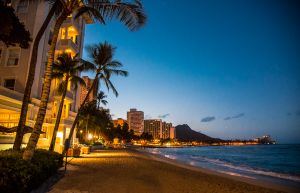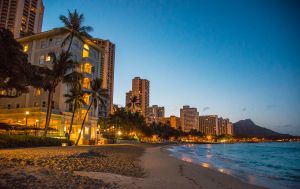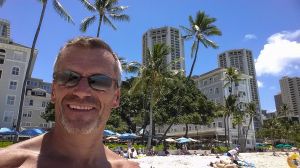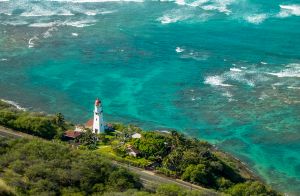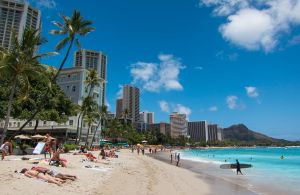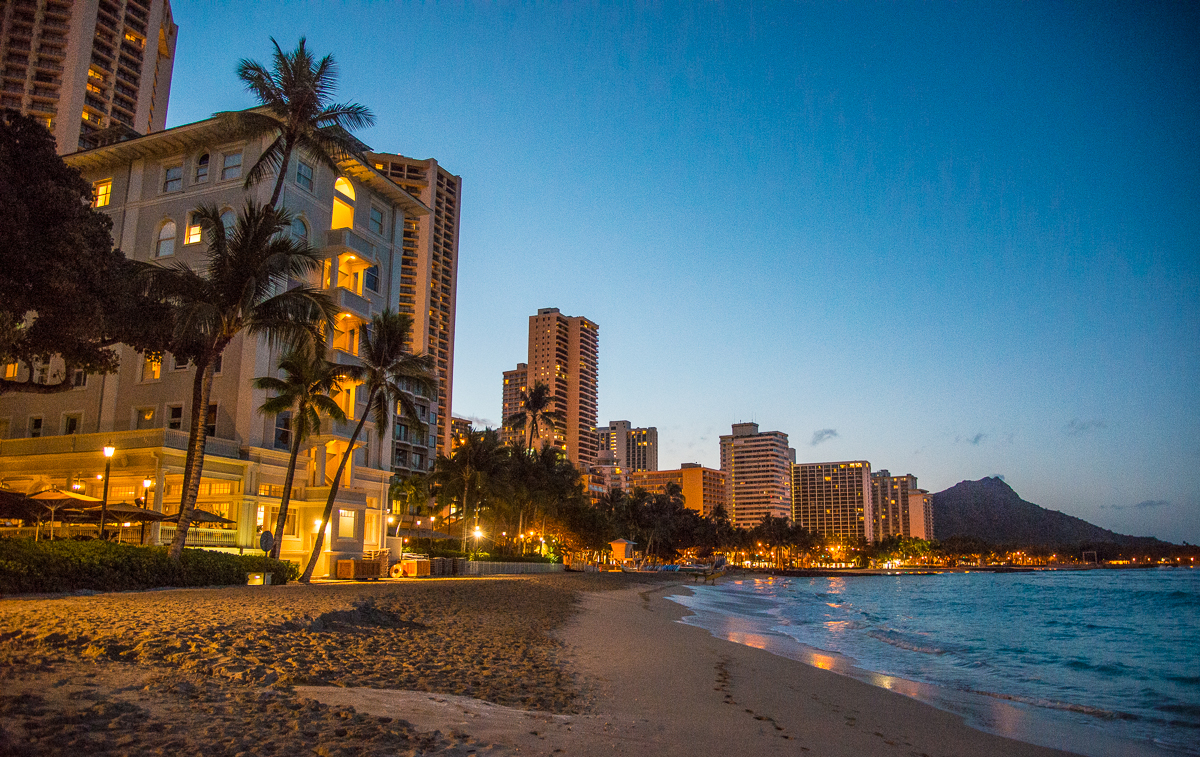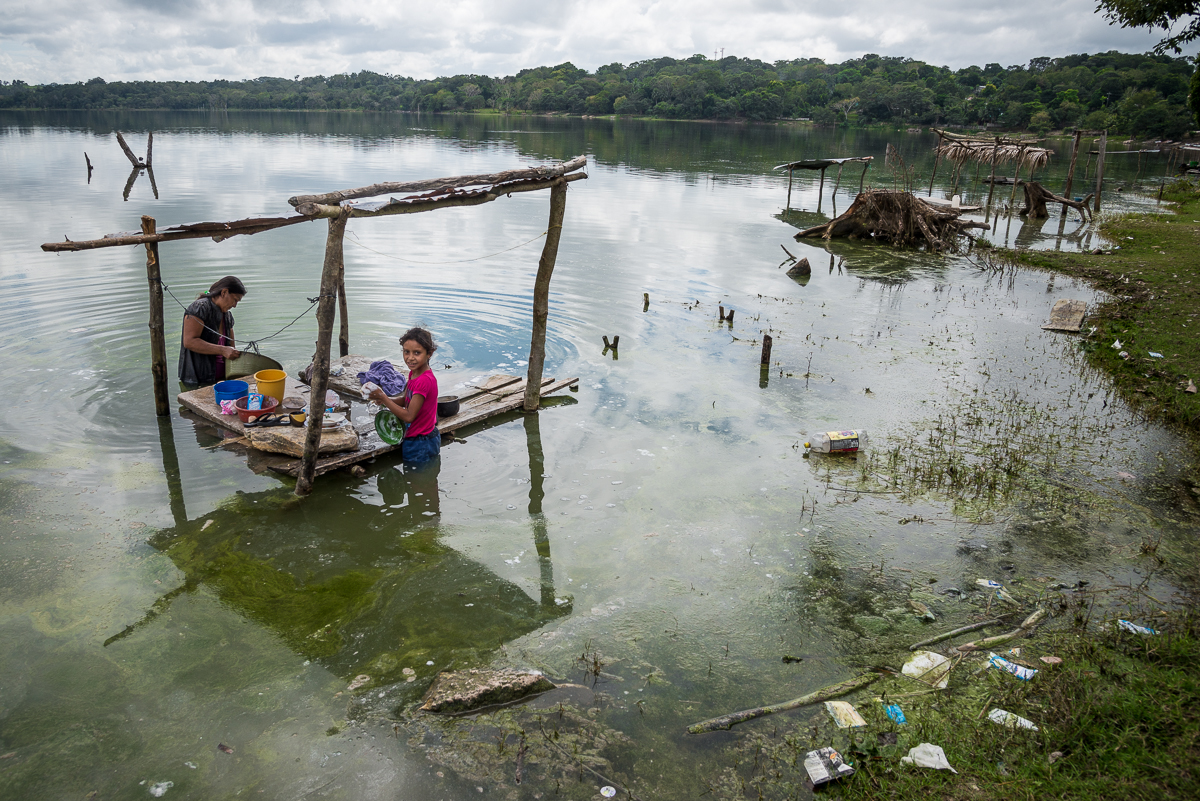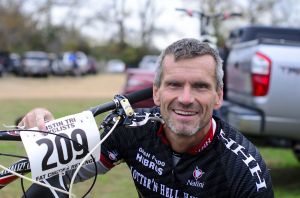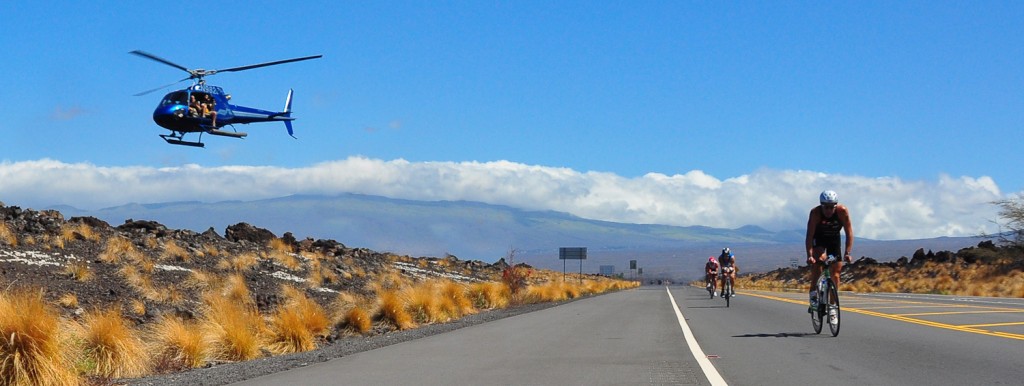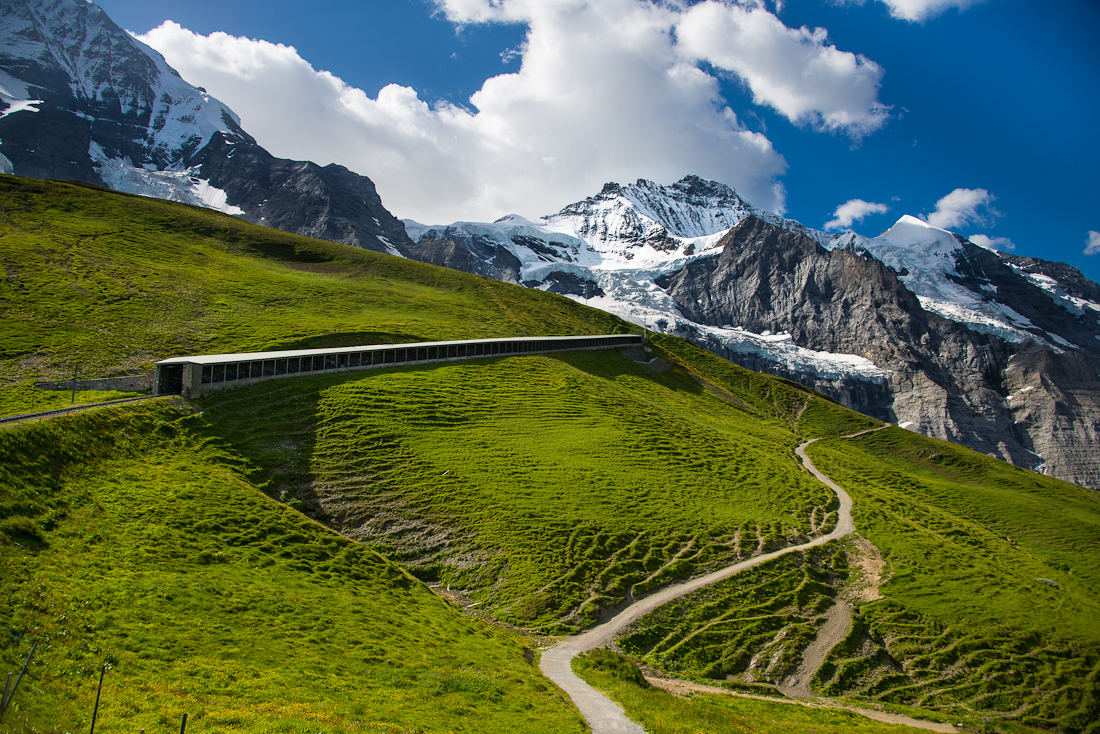OKAY! Finally — the last of my pictures from Scotland. Yes, I’ve been home for quite a while, but these were some cool places and I still wanted to share what they looked like.
Not surprisingly, Dunvegan Castle, the home of the MacLeod clan chiefs for the last 800 years or so, was chock full of old paintings of men named MacLeod wearing kilts and high socks. After my visit there, I headed for the ferry from the Isle of Skye out to the Isle of Lewis & Harris, and the big semi next to my car said, “D.R. MacLeod Transport.” Two of the workers who were getting me checked in on the ferry had name tags with the last name MacLeod. Apparently the MacLeod clan is alive and well on Skye and Lewis & Harris, just like they have been since before Columbus sailed west.
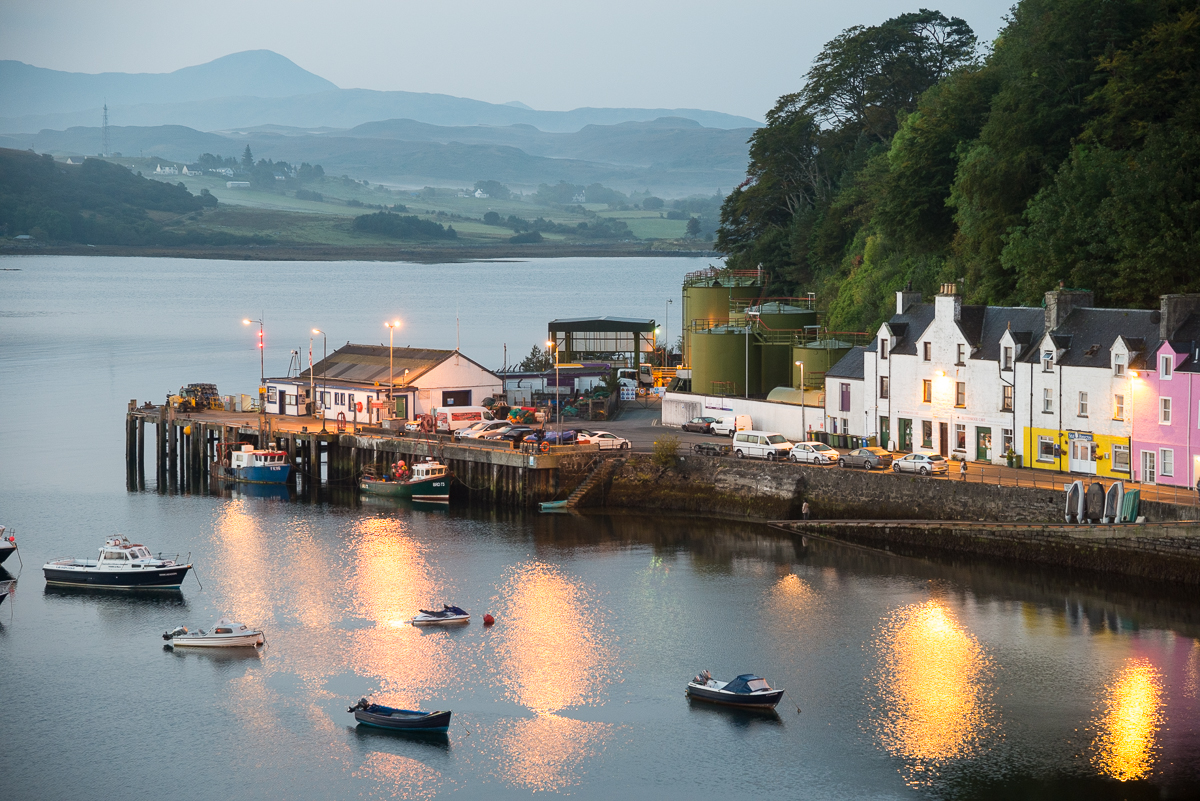
The harbor town of Portree — the biggest ‘city’ on the Isle of Skye — was my home base for a few days on and around the Isle.
The Outer Islands have their own culture. The area is known for its strong religious heritage – mostly the Presbyterian-ish Church of Scotland, as I understand it. On Sunday, there was almost nothing open: I finally found one café and one gas station that were (apparently) heathen-operated.
The highway and other signs in the area are written in both English and Gaelic, but a long-time local I quizzed thought that was mostly symbolic. He didn’t believe there were many people who spoke only Gaelic. I was surprised that I had no trouble understanding the Scottish accents in the Highlands and islands, even though I could barely understand the folks down in Glasgow. (I was briefly concerned that I was going to be detained at the Glasgow airport because I was unable to understand and answer the several security-screening questions asked in Glasgow-accented “English”).
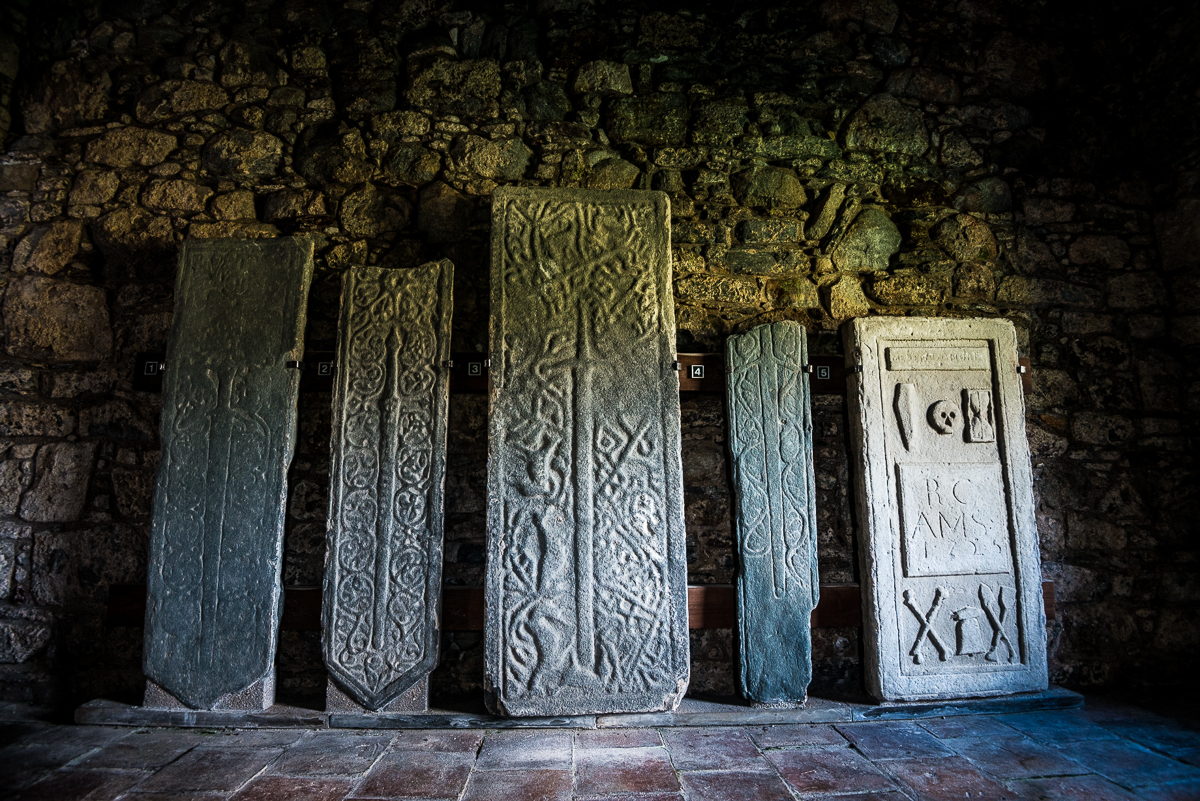
These 600-year-old carvings of swords, displayed inside St. Clements Church on the southeast tip of the Isle of Harris, probably once marked the graves of prominent members of the MacLeod clan.
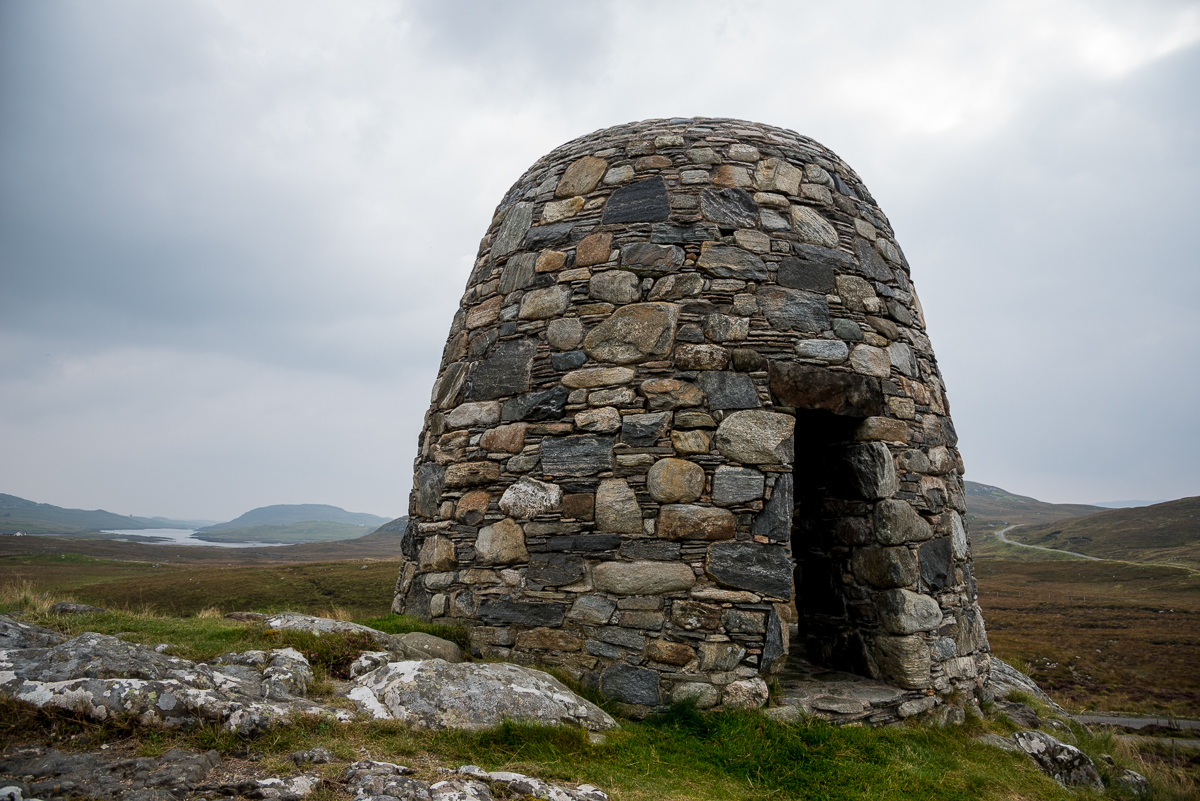
This igloo-looking monument on the Isle of Harris is a modern memorial to a group of protesting local farmers from the late 1800s. A part of it marks the spot where the local sheriff (literally) “read the Riot Act” to the protesters. The Riot Act was English law; if an unruly group gathered (creating a threat of a riot) the sheriff could read a section of the Act ordering them to disperse or else be arrested. I knew the modern idiom of “reading someone the Riot Act” — giving them a strong scolding or warning — but never knew its history!
Before I made the trip, I learned the words and music to “Scotland the Brave”. It’s the anthem (sometimes regal and sometimes eery) you always hear Scottish bagpipers playing as an iconic musical symbol of the country. At a minimum, I knew it would be running through my head while I was there, and I wanted to be prepared in case I was caught up in any pre- or post-Independence vote revelry and felt compelled to amuse, or to show some local musical allegiance. I was ready play it on either guitar or ukulele. Among the resulting disappointments: no occasions arose where my would-be barroom antics would have been appropriate; no real patriotic revelry erupted anyway; and — worst of all — I learned that the song was a 20th Century creation (written perhaps in the 1950s). Somehow I’d imagined it being played for those kilted soldiers who fought alongside Braveheart in the 1200s — not something written for a potential gig on the Ed Sullivan Show.
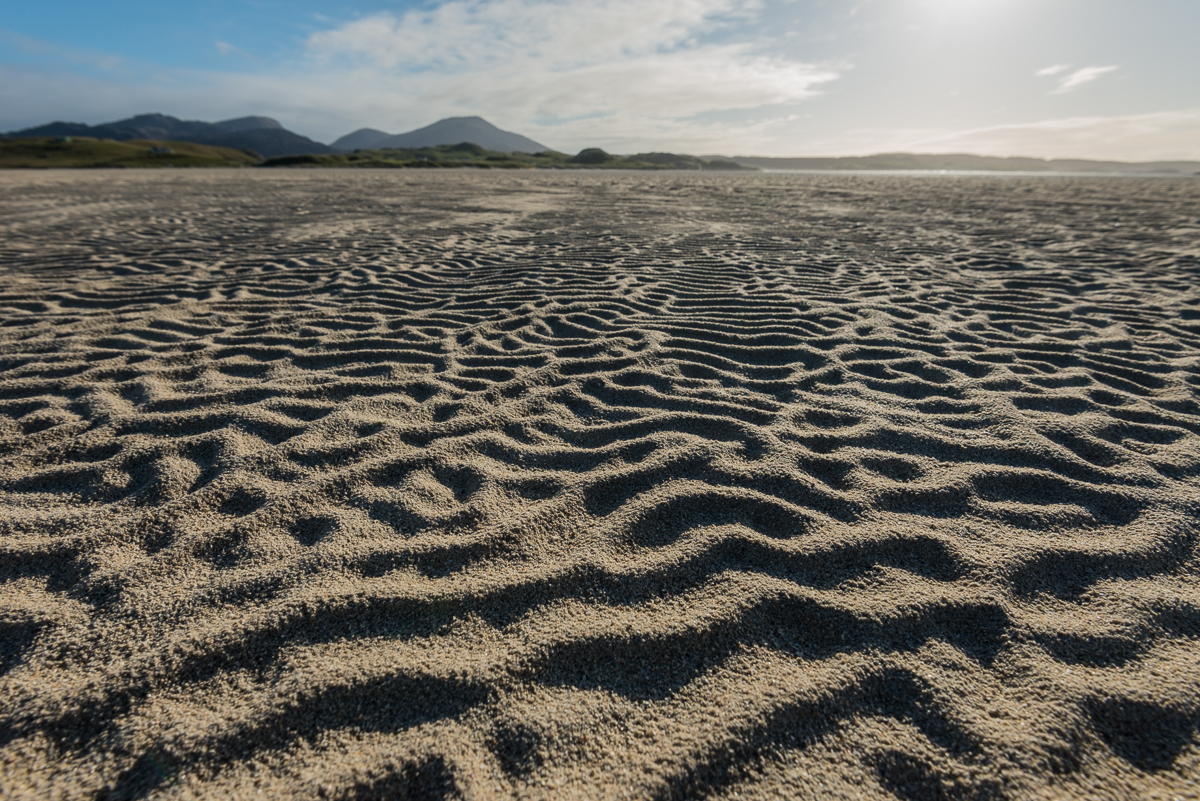
My most-remote destination was the Uig Sands area, on the west side of Lewis & Harris. At low tide, there was a mile or so of flat sand between my 400-year-old guest house and the water. At high tide, the Sands were flooded and the water was only a few yards away.
In one sense, the Outer Islands were a lot further from home than the mileage might make it seem. I started toward home at about noon on a Tuesday. A drive to the port where the ferry would leave the next morning; hotel overnight; ferry to an Inner island; drive to the town where I’d rented my car; taxi across the bridge to the mainland; train to Inverness; another train to Glasgow; taxi to Glasgow airport hotel; morning flight to Newark; airport tram; flight to Houston; parking shuttle; then my trusty Chevy Tahoe back to the house on Thursday night. I spent almost my entire two weeks in Scotland on the out-of-the-way islands rather than seeing the major cities and sites. I didn’t even make it to Loch Ness to see the monster. I had a great trip, but I don’t think I’m ready to cross Scotland off my list.
